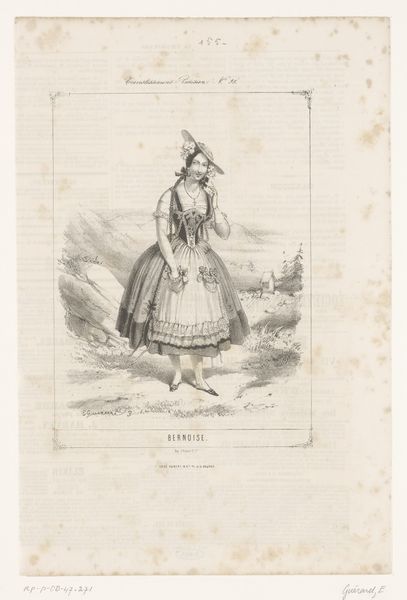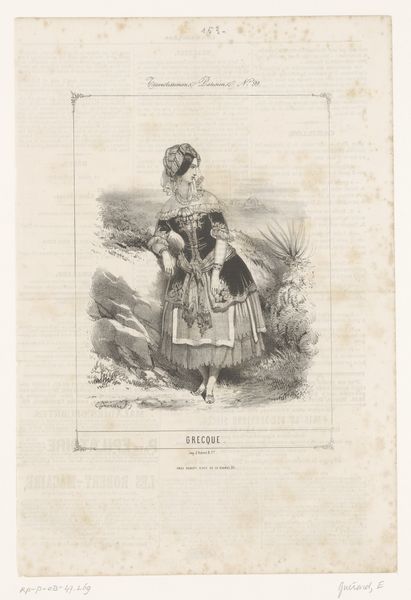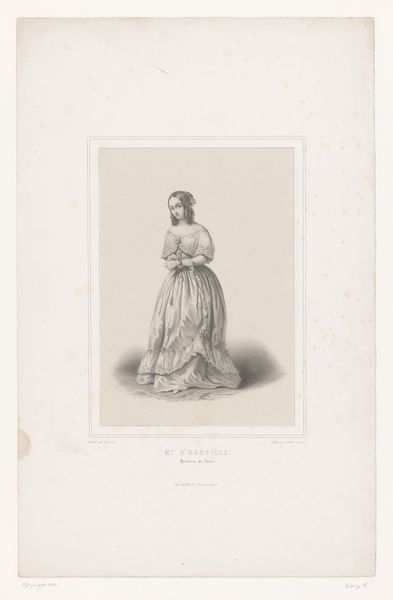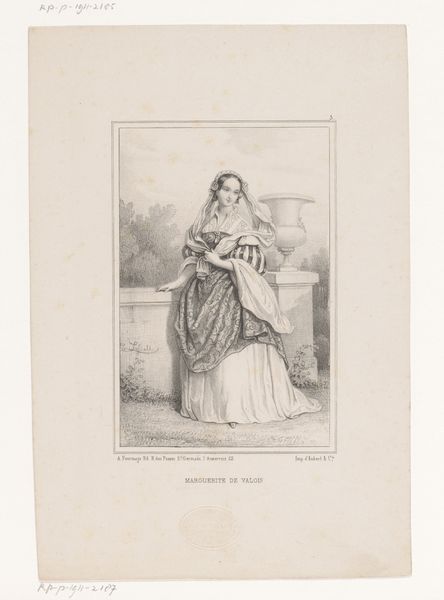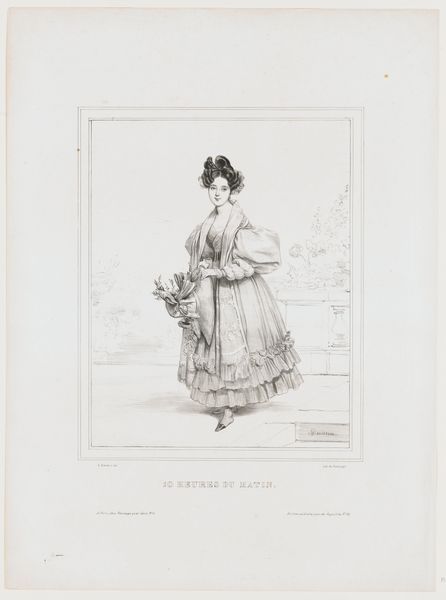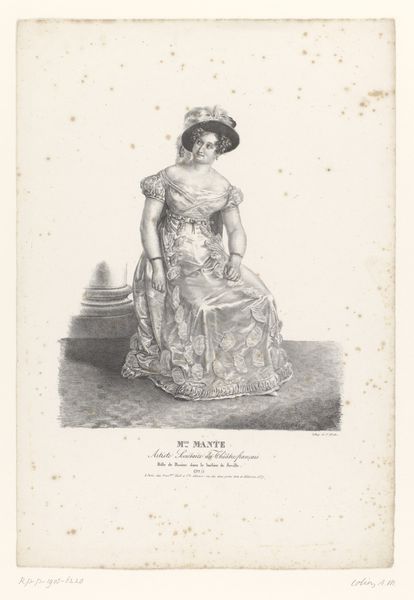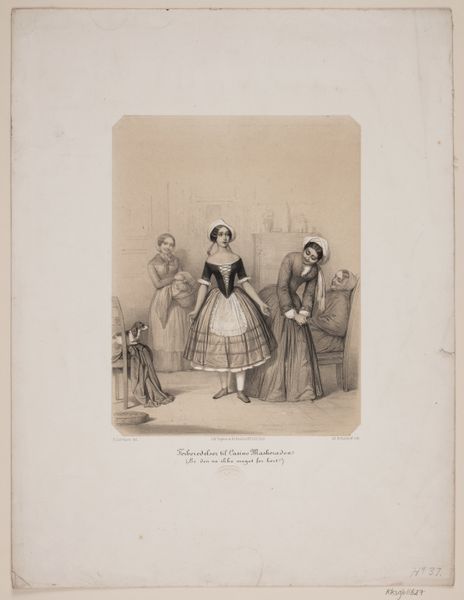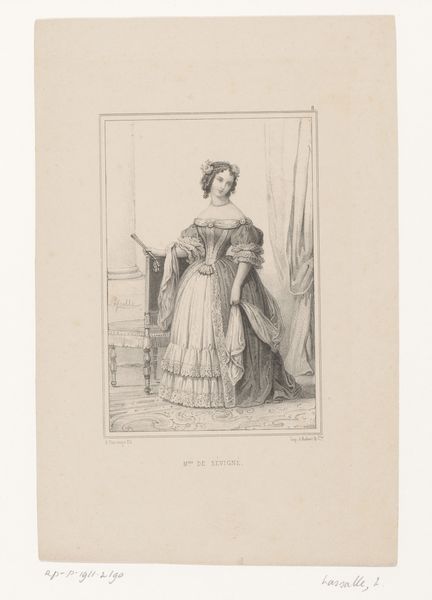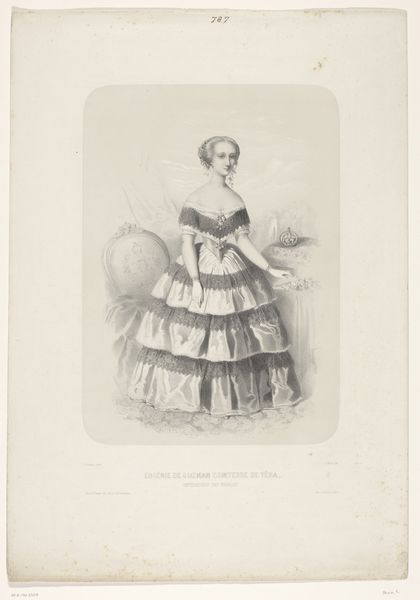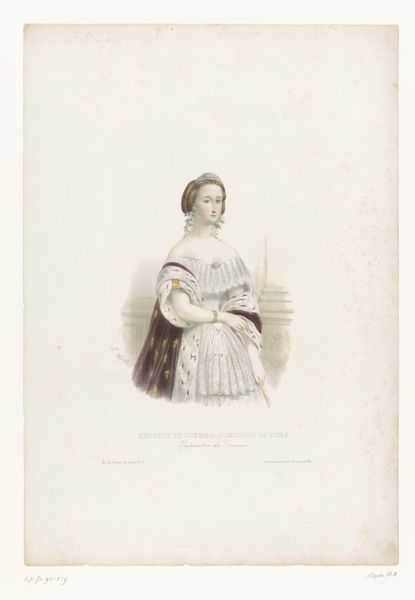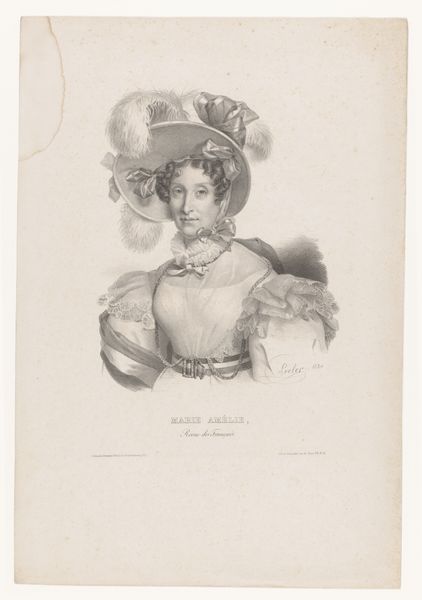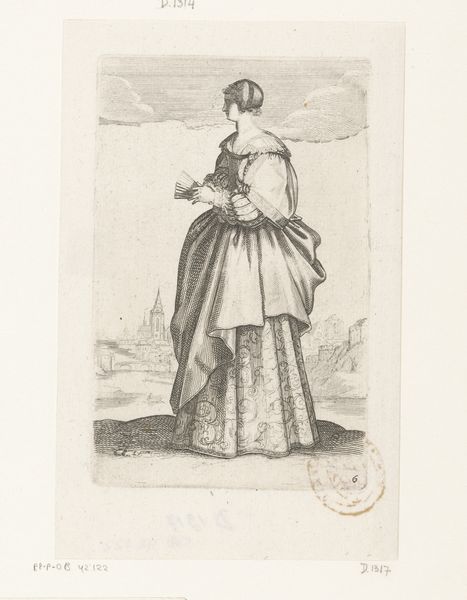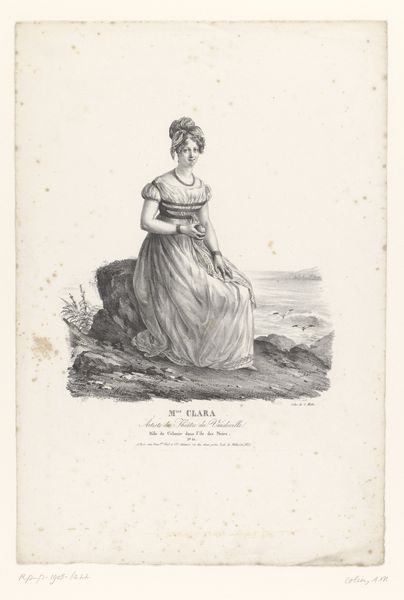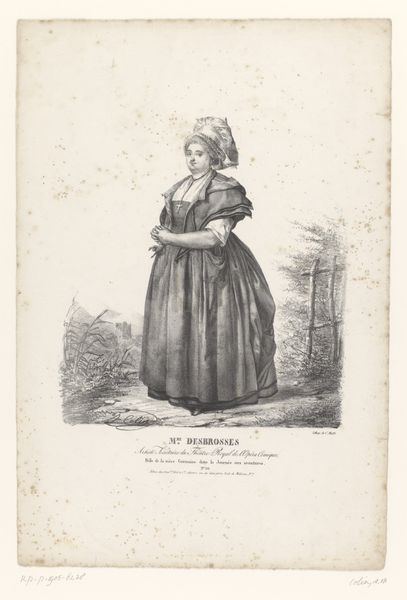
drawing, pencil
#
portrait
#
drawing
#
figuration
#
romanticism
#
pencil
Dimensions: height 363 mm, width mm
Copyright: Rijks Museum: Open Domain
Curator: This drawing is titled "Vrouw in kostuum uit Rome," which translates to "Woman in costume from Rome." It was created in 1844 by Eugène Guérard, using pencil as the medium. Editor: My first thought? She seems incredibly uncomfortable! Pinned down by the elaborate dress. She's trapped within these restrictive cultural mores, like a butterfly struggling to leave a gilded cage. Curator: It's important to understand the social context. This was likely commissioned, representing a Romantic vision of Italian women and meant for display, perhaps as an advertisement. Fashion was becoming increasingly prominent in print culture at this time. This drawing demonstrates a focus on detailing fashionable trends and the way that individuals sought to represent themselves through those trends. Editor: I wonder about the "woman" herself, rather than the idealized costume, though. Look at how precisely Guérard draws the fabric versus her somewhat blurred features, her downward gaze. It’s not about HER, really. Is it even supposed to be about the essence of being a Roman woman, as much as the construction of such an idea? The romanticizing is strong! Curator: The piece clearly caters to prevailing stereotypes and romanticized ideas of "Roman-ness". This highlights how such images were used to establish and disseminate perceptions of social and ethnic identities, both for internal and external audiences. These depictions were hardly neutral; they influenced viewers' ideas. Editor: Do you think this woman felt empowered in it or defined by the expectations embedded in those “ethnic identities”? There's a strange detachment there. I find myself feeling sympathy for her, rather than captivated by her elegance. And pencil – such an interesting choice! It lends a fleeting, ephemeral quality to something intended, you say, as representation of something significant! Curator: I'd emphasize its purpose as a representation of societal values. Visual codes, gender, class expectations all were shaped, reinforced and examined through pieces like this one. A complex reflection between who you are and how society sees you. Editor: Right, it’s like a mirror reflecting a curated image rather than a true reflection. Makes you think how easily “images” come and go; how deeply stereotypes are seated and sustained, even still today. Food for thought.
Comments
No comments
Be the first to comment and join the conversation on the ultimate creative platform.
